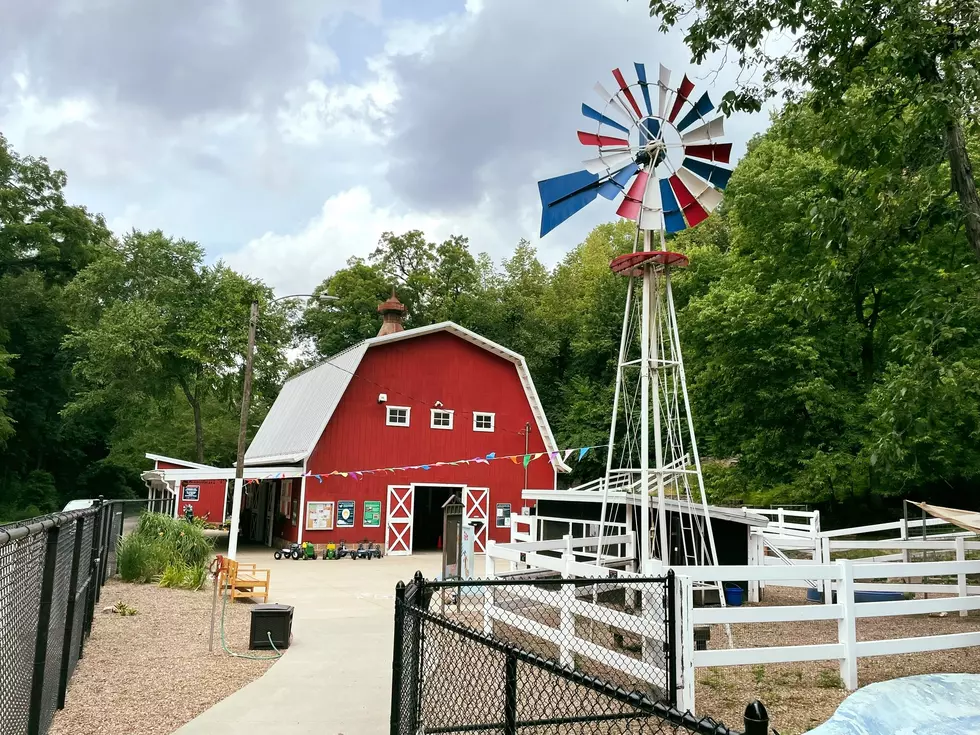
Don’t Feel Bad About Eradicating Iowa’s Top 5 Nastiest Invasive Pests
Invasive species pose a significant threat to ecosystems worldwide due to their capacity to outcompete and displace native flora and fauna. This competitive advantage often leads to the decline, and sometimes extinction of indigenous species. In turn, disrupting the delicate balance of local ecosystems. Invasive species can even alter fundamental ecological processes, such as nutrient cycling and water flow patterns.
Risks to both local wildlife and human populations grow as there is introduction of new diseases from invasive species. Additionally, invasive species wreak havoc economically by damaging crops, fisheries, and infrastructure. Their ability to rapidly spread, facilitated by human activities, makes controlling their impact an almost impossible challenge. As a result, the pervasive and detrimental effects of invasive species emphasize the absolute importance of proactive measures to prevent their introduction. In Iowa, there 5 major pests to keep your eyes out for. One was just spotted for the first time in Illinois but could be making its way across the mighty Mississippi river.

Iowa's Top 5 Nastiest Invaders
5) Spotted Lanternfly (Lycorma delicatula)
The Spotted Lanternfly is native to China and was first detected in Pennsylvania in September of 2014. According to the USDA APHIS website, this insect is considered a "Hungry Pest." Hungry pests are invasive species that threaten to harm crops and trees. If left unchecked, they have the potential to devastate entire ag industries which in turn can eliminate jobs, threaten the local food supply, and cost American businesses and families billions.
According to the USDA, the spotted lanternfly does not fly long distances, but is a very good 'hitchhiker.' In fall, female fly's lay mud-like egg masses on tree bark, and outdoor items; like, lawnmowers, bikes, grills, and vehicles. It feeds on a wide range of fruit, ornamental, and woody trees. Examples include; Almonds, Apples, Apricots, Cherries, Grapes, Hops, Maple Trees, Nectarines, Oak Trees, Peaches, Pine Trees, Plums, Poplar Trees, Sycamore Trees, Walnut Trees, and Willow Trees.
Spotted lanternfly eggs are shown attached to a tree.
If Spotted Lanternflies or their egg clutches are ever discovered take a picture, report it to the local department of agriculture or DNR and then stomp the bugs or scrape the egg clutch.
A student with the after-school outdoor education class Nature Nerds destroys spotted lanternfly eggs.
4) Asian Longhorned Beetle (Anoplophora glabripennis)
The Asian Longhorned beetle is a foreign wood borer that is originally from China and Korea. It is not known to currently occur in Iowa; however, this pest is one that would deserve our utmost attention if it were accidentally introduced through firewood, logs, or other unprocessed wood products.
Trees stressed by the Asian longhorned beetle may exhibit early fall color by mid-summer, and weakened branches may break. The beetle prefers maple species, including boxelder, Norway, red, silver, and sugar maples. Other preferred hosts are birches, Ohio buckeye, elms, horse chestnut, and willows.
Adult beetles often reinfest the same host tree from which they emerged. The damage to the tree can be tremendous, and can build up over a number of years, eventually killing the tree or weaken it to a point where limbs begin to break and fall. This process of reinfesting trees has made eradication attempts and quarantines successful, especially when the beetle was found in it's earliest stages.
3) Thousand Cankers Disease of Black Walnut
Did you know that black walnut is one of the most sought-after hardwoods and that Iowa is 6th in the nation in the production of walnut lumber? Thousand cankers disease (TCD) threatens not just Iowa but the entire United States walnut industry, and is caused by a recently discovered fungus, Geosmithia morbida, that is vectored by the walnut twig beetle, (Pityophthorus juglandis).
TCD has so far not been found in Iowa. The disease occurs in nine western states, and was found for the first time at the native range of black walnut trees in Tennessee during July of 2010. The disease has also been found in isolated locations of Virginia, Pennsylvania, Ohio, and North Carolina.
The walnut twig beetles carry these Geosmithia fungal spores to uninfected trees. As the beetle feeds on the tree and creates its galleries under the bark, the fungus infects the surrounding tissue near the beetle's gallery. The fungus kills the phloem tissue causing a small, darkened area of dead tissue around the beetle gallery. This small area is called a canker. Multiple attacks by walnut twig beetles may result in many cankers on the same tree. These cankers collectively throttle growth and kill branches, eventually leading to the death of the entire tree. Essentially the tree is killed by thousands and thousands of cankers, such is the name.
2) Spongy Moth (Lymantria dispar) A.K.A. Gypsy Moth
The Spongy Moth is a Federal and State quarantined leaf-eating insect that is a serious threat to many forest trees and ornamental plants. It is easily moved into new areas by unsuspecting people, because it will hitch a ride on vehicles and other outdoor amenities.
For over 10 years, Iowa has been part of a national program called 'Slow the Spread' (STS) which helps states on the naturally-advancing spongy moth front, delay its spread rate. The STS program operates in the “transition zone” between the leading edge of the infested zone and the un-infested zone. Areas of northeast Iowa fall within the transition zone.
The caterpillar is the damaging stage of the insect feasting on more than 300 species of trees and shrubs, with oak leaves being their favorite. When populations reach outbreak proportions the caterpillars can completely de-leaf forested areas. Repeated leaf devastation can weaken trees leaving them vulnerable to attack by diseases and other insects. Older and weaker trees may be killed by a single defoliation. Additionally, the hairs of the caterpillar can cause allergic reactions in sensitive individuals.
Besides natural dispersal, the spongy moth can move long-distances by "hitchhiking" on vehicles, campers, firewood, and other outdoor items. Females will lay egg masses on items which are then transported long distances by people, just like the spotted lanternfly.
1) Emerald Ash Borer
Adult Emerald Ash Borer
The emerald ash borer is one of the most destructive pests we have in Iowa, now infecting trees across all counties in the state. The larvae of this insect feeds under the bark of ash trees. They damage the trees vascular system, making it impossible for the tree to transport water and nutrients. This process can kill the tree in as little as two to four years.
The half-inch long metallic-green adult beetle eats on ash leaflets from late-May to August in Iowa. Native to Asia, EAB was first discovered in the United States near Detroit, Michigan in 2002 and is thought to have been introduced via wood packaging material. EAB has currently been detected in 36 states.
Ash trees within 15 miles of a known EAB infestation are at high risk of attack. Preventative treatments are suggested to protect healthy and valuable ash trees within at-risk areas.
Currently EAB populations are being controlled in Iowa by 3 parasitoids. These specialized parasitoids attack and ultimately kill the egg or larval stage of EAB. Due to their success of suppressing EAB populations, four species have been approved and introduced into the US as biological control agents. Iowa is among a number of states utilizing this classical biological control approach, with three types of parasitoids being released: Oobious agrili, Tetrastichus plannipennsi, and Spathius galinae.
It's amazing how detrimental just one invasive species can be!
And that's why identifying our invasive species is so crucial. It's their potential to disrupt ecosystems, harm biodiversity, negatively impact economies, human health, and livelihoods. Invasive species can outcompete native flora and fauna, alter ecosystem dynamics, cause agricultural losses, and introduce diseases harmful to both humans and animals. Early detection is key to effective control measures, preventing their establishment, and minimizing economic and ecological damage. So, keep your eyes peeled for these nasties in your local Iowa neighborhood.
LOOK: 11 tick-borne illnesses and what to watch out for during your outdoor adventures
Gallery Credit: Martha Sandoval
LOOK: 20 of the biggest insects in the world
Gallery Credit: Andrea Vale
These 50 US Cities are Crawling with Bed Bugs
Gallery Credit: Scott Clow
More From 98.1 KHAK

![Courtlin Spends Her 33rd Birthday Touring Nashville [GALLERY]](http://townsquare.media/site/675/files/2024/05/attachment-3916b601-2cc9-4980-875f-60402cc50e00.jpg?w=980&q=75)


![Iowa Glamping Tents To Take Advantage of This Summer [PHOTOS]](http://townsquare.media/site/675/files/2024/05/attachment-Untitled-design-63.jpg?w=980&q=75)




